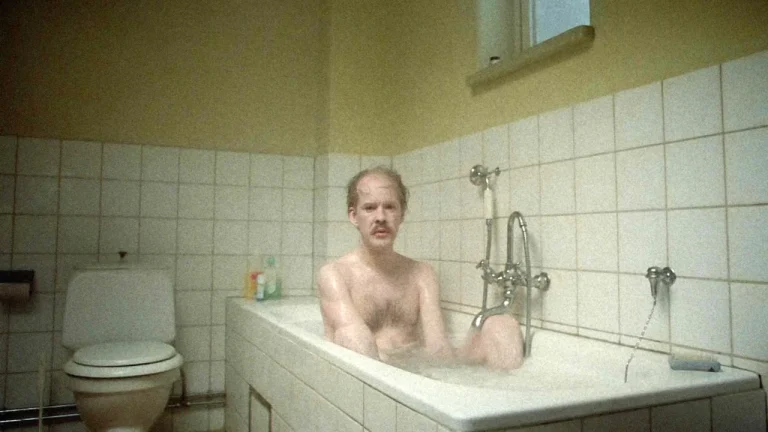The Cannes Film Festival’s recognition of Coralie Fargeat’s “The Substance” for Best Screenplay doesn’t merely highlight the film’s supposed merits; it reveals the boundaries of critique that the industry finds tolerable. The applause for Substance is not an endorsement of meaningful resistance but a celebration of critique that neatly aligns with the limits of what the system is willing to entertain. In this, “The Substance” symbolizes the liberal propensity. As it rewards critiques that gesture toward rebellion while never risking the comfort of the status quo.
In “Substance” (2024), Coralie Fargeat crafts a spectacle that seeks to expose the degradation of bodies and ideas within the entertainment industry, yet it becomes a profound study of ideological collapse. Like a colonized subject alienated by the mask of assimilation, the film does not offer liberation. Instead, it preserves the very violence it sets out to critique. This is not merely the failure of a work of art but the symbolic unraveling of liberalism’s façade, revealing its contradictions as a doctrine incapable of addressing the crises it ostensibly opposes.
The gaze in “The Substance,” though intending to challenge, becomes an apparatus of domination. The treatment of Demi Moore’s character, starkly juxtaposed against Margaret Qualley’s, lays bare the film’s underlying hypocrisy. The narrative exposes a cinematic language that mutates to enforce a binary opposition of “youth versus age” rather than dismantling it. It does not take the audience seriously. It assumes them complicit, pandering to an appetite for extremes, as though subtlety or nuance in representing these figures would fail to register.
This binary construction does not challenge societal perceptions; it capitulates to them and reinforces them. Here, we see the liberal logic at work: the mimicry of critique that merely reinstates the structures it seeks to dismantle. The film’s gaze is not emancipatory. It is punitive, reducing the subject to an object. Like the liberal promise of equality, it falters under the weight of its contradictions, revealing a system designed to maintain hierarchies while feigning their deconstruction.
Also Read: The Substance (2024) Movie Ending Explained, Themes Analyzed & Body Horror’s Subversion Of Beauty Politics

What emerges in “The Substance” is not subversion but the disintegration of meaning itself. The narrative collapses into a void, a nihilistic abyss that echoes the hollow promises of liberal governance. This is the liberal project writ large: to gesture toward progress while preserving the structures of capital and dominance. Liberalism, like the film, lacks a coherent vision of transformation; it critiques only to sustain. Public healthcare is spoken of but never realized. Climate action is pledged, yet fossil capital is protected. Workers’ rights are honored rhetorically, but sacrificed on the altar of accumulation. The film’s failure to resolve its critique is the failure of liberalism to move beyond its paralysis.
Fargeat’s film mirrors the fate of the colonized who, having adopted the language of the oppressor, find themselves unable to articulate liberation without echoing domination. “The Substance” frames itself as a resistance to Hollywood’s ageism and sexism but instead performs them anew. This is the liberal logic of performative critique: the insistence on reflecting on the problem without dismantling it. Just as liberalism critiques systemic oppression while expanding its imperialist ventures, so too does “The Substance” critique without consequence.
To witness the unraveling of meaning in “The Substance” is to confront the essential truth of liberalism: it is an ideology incapable of genuine transformation. Liberalism performs critique, not as an act of resistance, but as an anesthetic to quell the uprising. Its gestures are not toward freedom but toward equilibrium. A recalibration of oppression rather than its abolition. The film industry, like liberalism, becomes a spectacle of decay: a system of domination masked as critique.
Yet, where liberalism falters, “The Substance” offers an unintentional opportunity. To see the abyss is to recognize the necessity of stepping beyond it. It is a reminder that liberation cannot be achieved through the tools of the oppressor. It requires a rupture, a dismantling of the structures that uphold the spectacle. The liberation of the colonized—and of the audience—demands not reflection but revolution.
Basically, “The Substance” is not merely a flawed film; it is a manifesto of failure—a case study of the limitations of critique without action. Its contradictions mirror those of liberalism: a doctrine that interrogates without transforming, and critiques without liberating. In its emptiness, “The Substance” compels us to confront the failures of a system that sustains itself through the illusion of change. The question it leaves us with is not how to critique more eloquently, but how to dismantle the structures of domination that demand critique in the first place. It is not enough to reflect the abyss; we must chart a path out of it.







